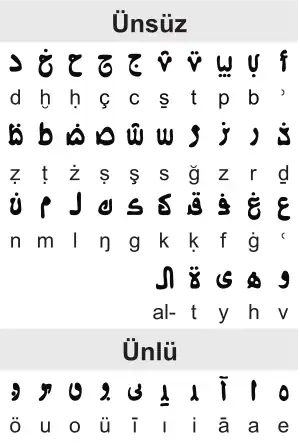| Enver alphabet | |
|---|---|
 | |
| Script type | |
| Creator | Enver Pasha |
Time period | 1917–1918 |
| Languages | Ottoman Turkish |
| Related scripts | |
Parent systems | |
Hurûf-ı munfasıla (Ottoman Turkish: حروف منفصله, literally "separate letters", also hatt-ı cedîd, hatt-ı Enverî, Enver script, Enveriye, army alphabet or German script), is the revised Arabic script that Enver Pasha made to simplify the writing of Ottoman Turkish. According to this system, the final forms of letters were used without connections to other letters, and vowels were also indicated. Pasha prepared a book called Elifbâ to teach this system in 1917. It is not known whether the script officially ended or was abandoned.[1] This writing system consists of a total of 45 characters, including 35 consonants and 10 vowels.
Ruşen Eşref Ünaydın conveyed Mustafa Kemal's opinion on this system in 1918 as follows[2]:
This work, although done with good intentions, was done haphazardly and at an inappropriate time... Is the time of war a time to deal with letters? For what purpose? To facilitate communication? Has this system made communication slower and more difficult compared to the old system? At a time when speed is crucial, what is the advantage of an endeavor that slows things down and confuses people's minds? But since you have started something, at least have the courage to do it properly.